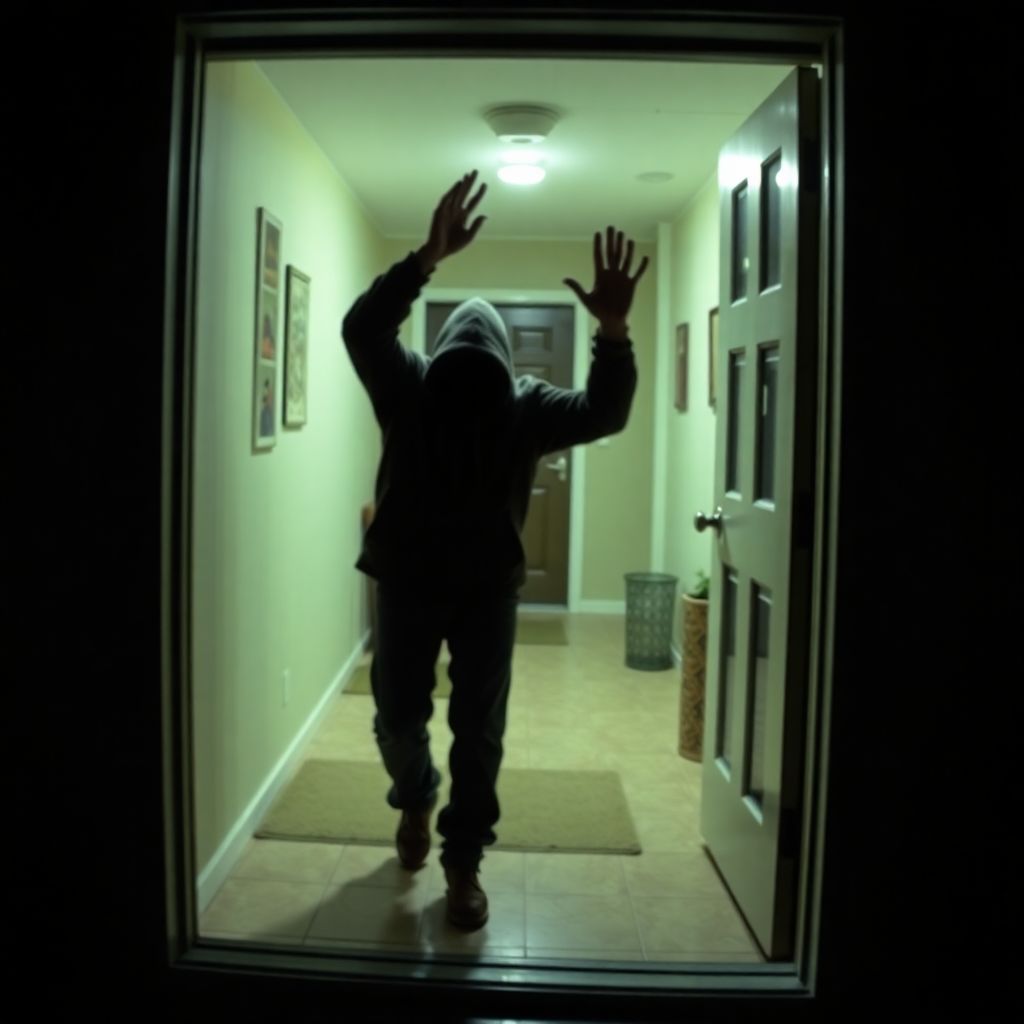A disturbing new trend on social media is causing widespread panic and drawing criticism from law enforcement across the United States. A viral prank, which involves sharing AI-generated images of a supposed homeless man appearing inside people’s homes, has tricked unsuspecting viewers into believing they’ve been targeted by an intruder. The hyper-realistic visuals, often shared via TikTok and other platforms, have prompted emergency 911 calls and drawn sharp criticism from police departments, who warn that the stunt is not only distasteful but also potentially dangerous.
In one case, the Salem Police Department in Massachusetts released a public warning, citing several incidents where residents were genuinely convinced someone had broken into their homes. These individuals, after seeing doctored images sent by friends or appearing in their social feeds, called emergency services in a panic. Officers had to respond immediately, only to discover there was no actual threat. “Besides being in bad taste, there are many reasons why this prank is, to put it bluntly, stupid and potentially dangerous,” the department stated.
The prank works by using artificial intelligence tools to seamlessly insert a fictional character—often portrayed as a disheveled or “homeless” man—into photos of familiar home settings. These manipulated images are then sent to individuals under the pretense that a security camera or smart device has captured an unknown person inside their home. The realism created by modern AI tools is convincing enough to bypass skepticism, especially in moments of surprise or fear.
In Texas, similar incidents have occurred. Authorities in Round Rock, near Austin, reported a spike in emergency calls after residents were shown AI-generated images suggesting someone had entered their homes. In each case, police had to investigate the reports, wasting valuable resources and time. Local officials expressed concern that such hoaxes could delay responses to real emergencies and endanger public safety.
Law enforcement agencies are urging the public to stop participating in or spreading this prank. They also emphasize the broader risks associated with the misuse of artificial intelligence, especially when it plays on people’s fears or exploits societal issues like homelessness. Critics argue that the trend not only trivializes the real struggles of unhoused individuals but also contributes to a culture of fear and misinformation.
Beyond the immediate consequences of emergency service overload, experts warn about the psychological impact on those targeted by the prank. Receiving what appears to be photographic evidence of an intruder in one’s home can induce significant stress, anxiety, and even trauma. For individuals with a history of break-ins or PTSD, such pranks can have lasting mental health effects.
The incident also underscores the growing concerns around AI-generated content and its implications for personal safety and public trust. As generative technology becomes more accessible and advanced, the line between reality and fabrication continues to blur. This raises urgent questions about digital ethics, accountability, and the need for better regulation of AI tools.
Parents are being advised to talk to their children and teens about the dangers of participating in such pranks, especially since many of the videos are being circulated among younger users. Schools and community organizations are also encouraged to raise awareness about the responsible use of technology and the consequences of digital harassment.
Cybersecurity professionals suggest that platforms like TikTok, Instagram, and Snapchat need to take a more proactive role in moderating content that uses AI in deceptive or harmful ways. While humor and creativity are important aspects of online culture, these platforms must draw a line when the content incites panic or endangers public safety.
Meanwhile, digital forensics analysts recommend that users verify suspicious images before reacting. AI-generated photos often contain subtle inconsistencies—such as unnatural lighting, distorted backgrounds, or irregular facial features—that can be identified with careful inspection. However, as AI continues to improve, these telltale signs are becoming harder to spot.
In response to the growing misuse of generative AI, lawmakers are also beginning to explore potential regulations. Proposals include mandatory labeling of AI-generated content, stricter penalties for those who use synthetic media for malicious purposes, and increased funding for public education on digital literacy.
Ultimately, the incident serves as a cautionary tale about the double-edged nature of technology. While AI has the power to transform industries and improve lives, it also presents new avenues for deception, manipulation, and harm. As society adapts to these tools, a collective effort will be needed—from tech companies, law enforcement, educators, and users themselves—to ensure that innovation does not come at the cost of safety and trust.

